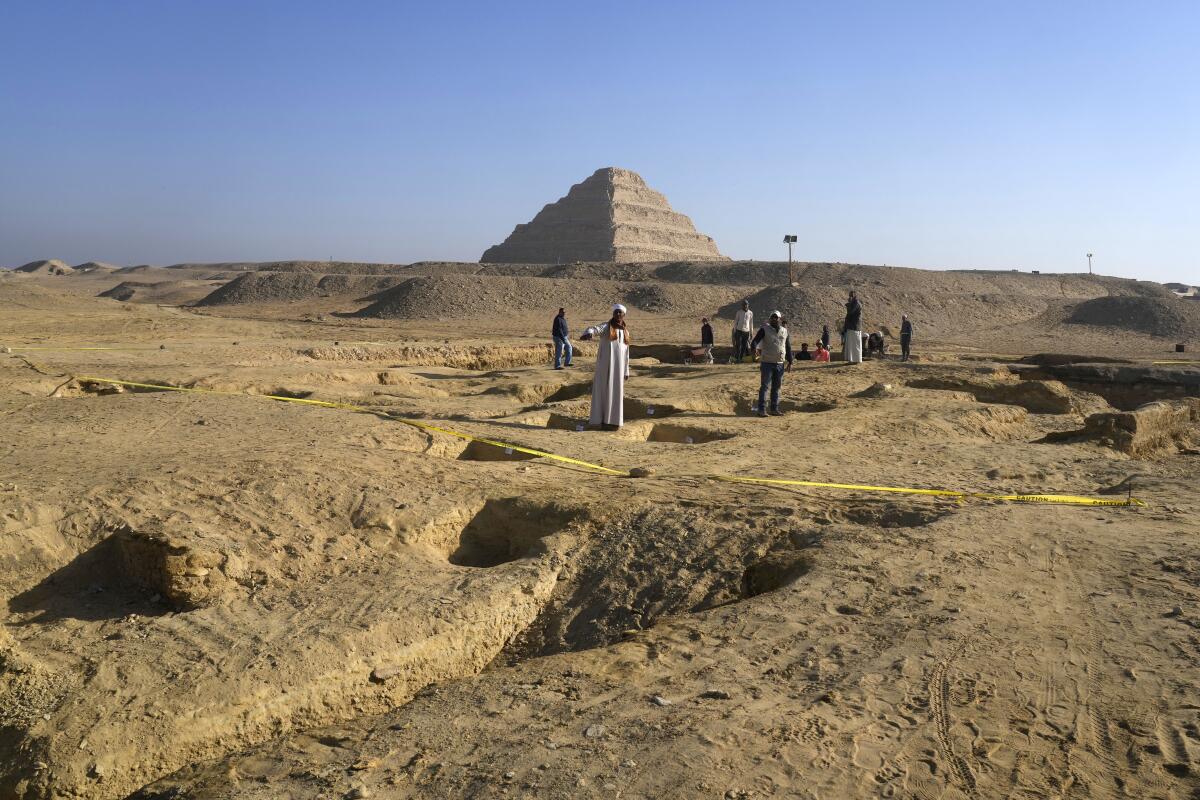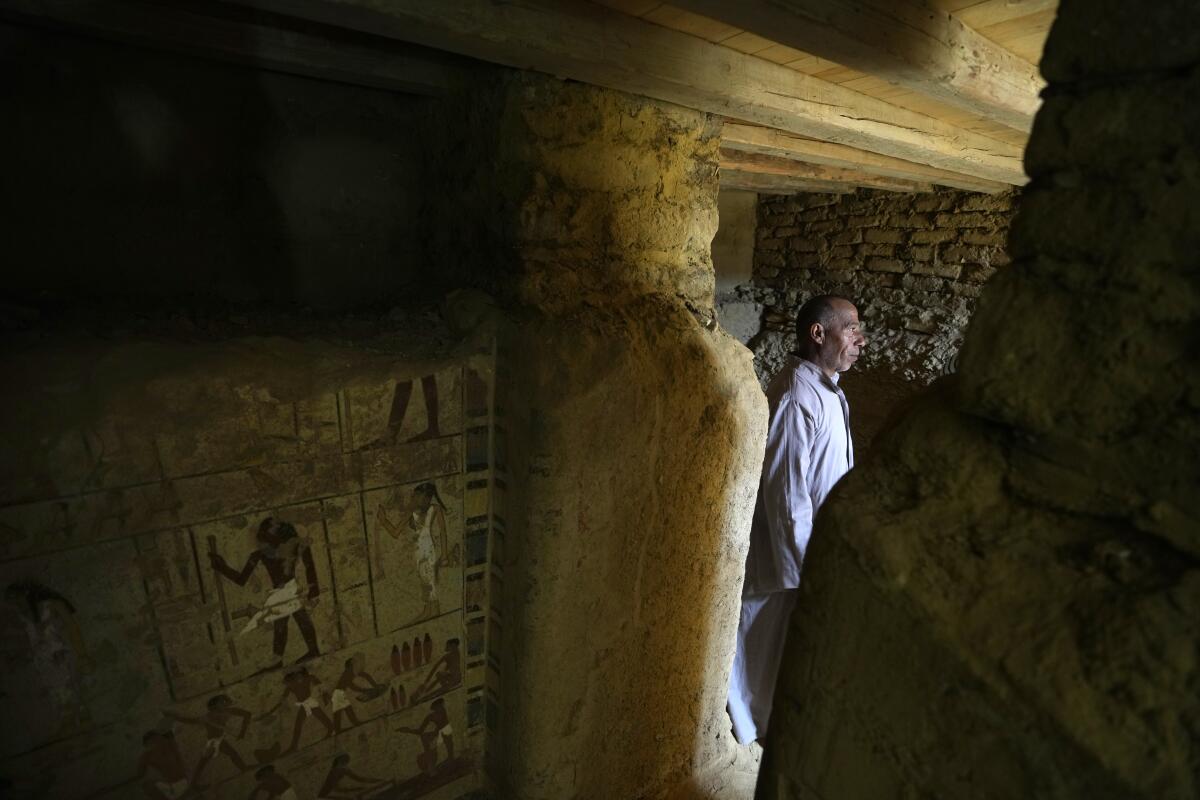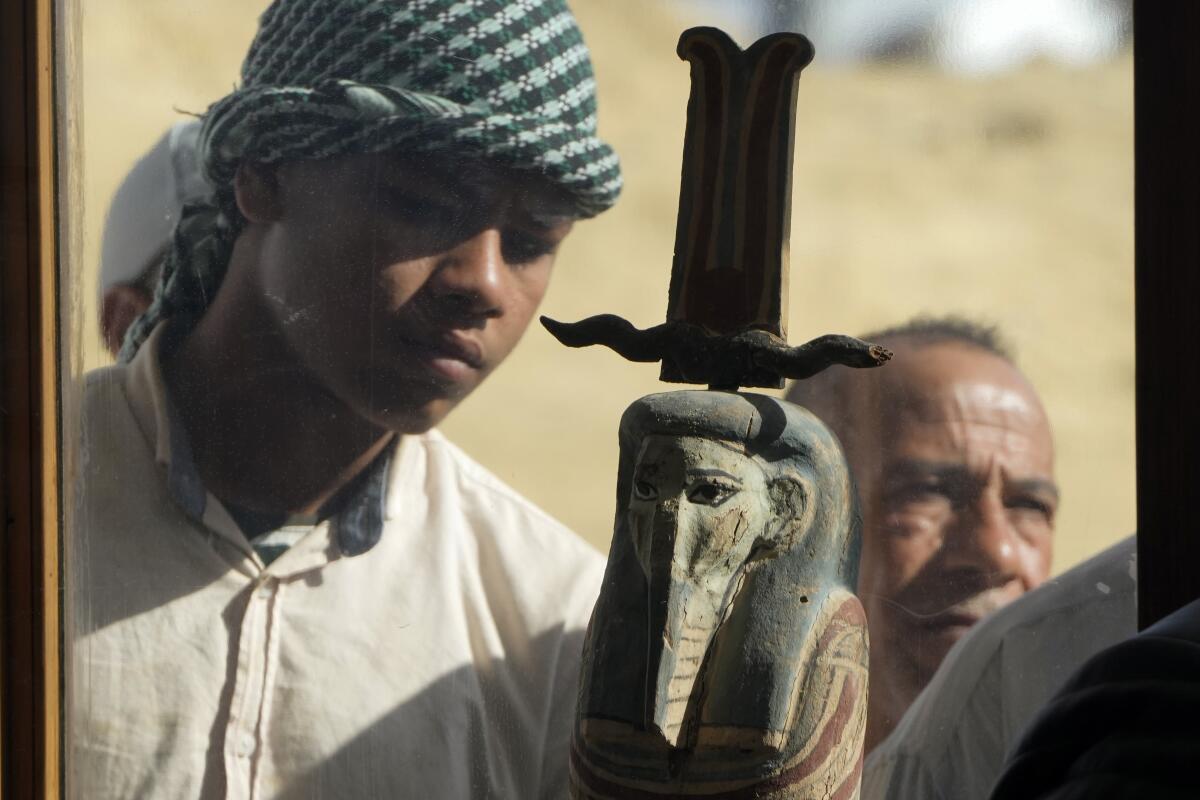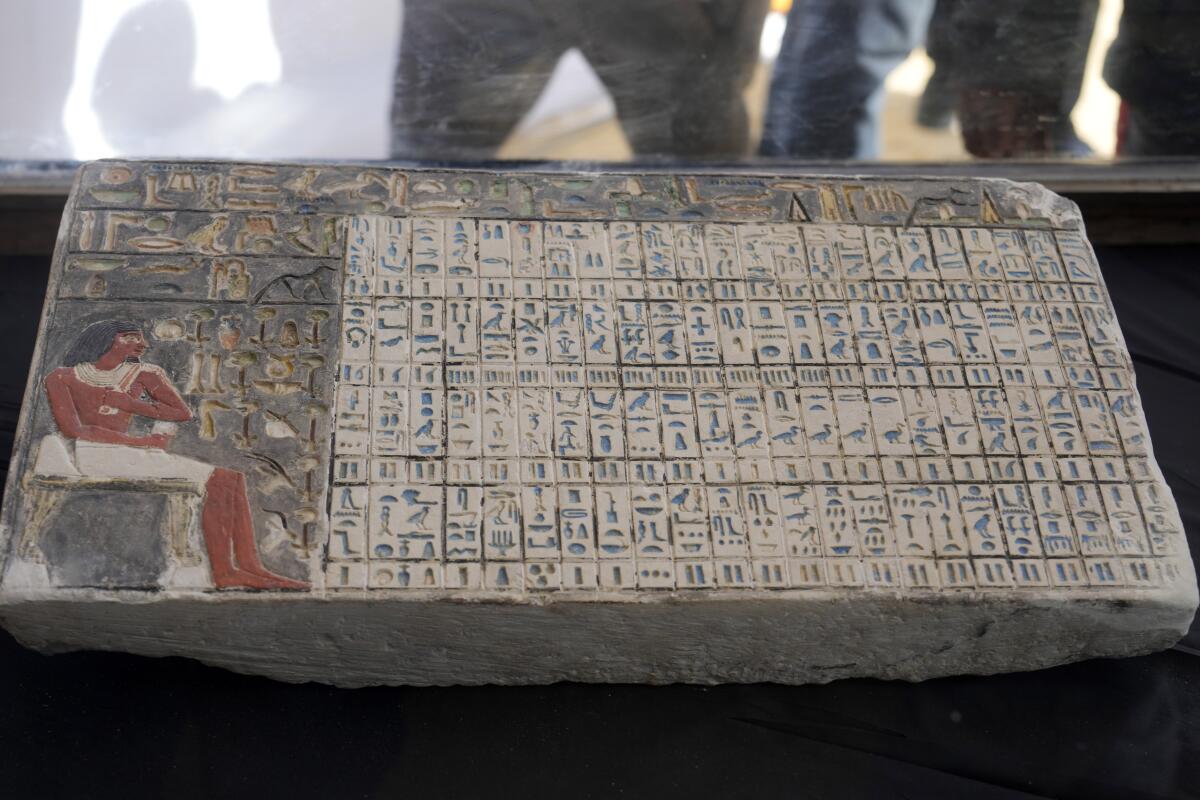Egypt unveils dozens of archaeological discoveries, including two ancient tombs

SAQQARA, Egypt — Egyptian authorities on Thursday unveiled dozens of new archaeological discoveries, including two ancient tombs, at a Pharaonic necropolis just outside the capital, Cairo.
The artifacts, unearthed during a yearlong excavation, were found beneath an ancient stone enclosure near the Saqqara pyramids and date to the fifth and sixth dynasties of the Old Kingdom, spanning roughly 2500 BC to 2100 BC, the excavation team said.

One of the uncovered tombs belonged to a priest from the fifth dynasty known as Khnumdjedef, while the other tomb belonged to an official named Meri, a palace official who held the title of “the keeper of the secrets,” the team said. Other major findings from the excavation include statues, amulets and a well-preserved sarcophagus.
Egypt’s most renowned archaeologist and director of the excavation, Zahi Hawass, unveiled the new discoveries from the stone enclosure, known as Gisr al-Mudir.
‘‘I put my head inside to see what was inside the sarcophagus: a beautiful mummy of a man completely covered in layers of gold,’’ Hawass said.


The Saqqara site is part of a sprawling necropolis at Egypt’s ancient capital of Memphis that includes the Giza Pyramids as well as smaller pyramids at Abu Sir, Dahshur and Abu Ruwaysh. The ruins of Memphis were designated a UNESCO World Heritage site in the 1970s.
Thursday’s unveiling comes amid a flurry of new discoveries announced by Egyptian authorities over the last week. Near the southern city of Luxor, authorities said they found dozens of burial sites from the New Kingdom era, dating from 1800 BC to 1600 BC. Discovered nearby were the ruins of an ancient Roman city, it said.
In a separate announcement Tuesday, a group of scientists from Cairo University revealed previously unknown details about a mummified teenage boy dating to about 300 BC. By using CT scans, the team of scientists was able to shed new light on the boy’s high social status by affirming the intricate details of the amulets inserted within his mummified body and the type of burial he received.
Egypt often publicly touts its ancient discoveries to attract more tourists, a significant source of foreign currency for the cash-strapped North African country. The sector suffered a long downturn after the political turmoil and violence that followed a 2011 uprising.
Egypt’s tourist industry was also hit hard by the COVID-19 pandemic and is suffering from the fallout from the war in Ukraine. Both Russia and Ukraine were formerly large sources of tourists visiting Egypt.
Associated Press writer Jack B. Jeffery contributed to this report from Cairo.
More to Read
Sign up for Essential California
The most important California stories and recommendations in your inbox every morning.
You may occasionally receive promotional content from the Los Angeles Times.










